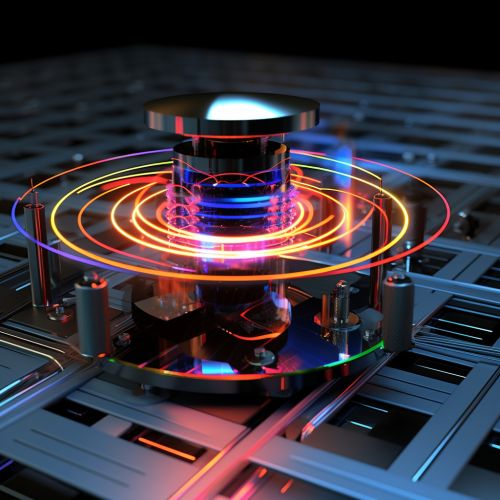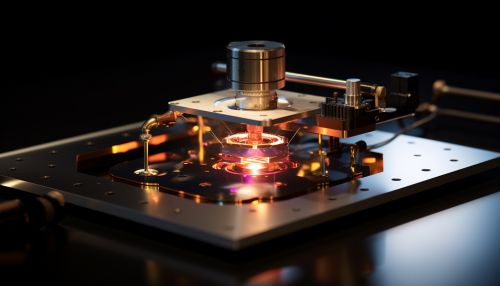Quantum Computing with Quantum Optomechanical Systems for Quantum Technology
Introduction
Quantum computing is a rapidly evolving field that leverages the principles of quantum mechanics to perform computational tasks. One of the promising avenues in this area is the use of quantum optomechanical systems, which combine the principles of quantum mechanics, optics, and mechanics to create a new paradigm for quantum technology.


Quantum Computing
Quantum computing differs from classical computing in its use of quantum bits, or qubits, instead of binary bits. Qubits can exist in a superposition of states, allowing them to process a vast amount of information simultaneously. This property, along with entanglement and quantum interference, enables quantum computers to solve certain problems much more efficiently than classical computers.
Qubits
Qubits are the fundamental units of information in quantum computing. Unlike classical bits, which can be either 0 or 1, qubits can be in a state that is a superposition of both. This property, along with the ability to entangle qubits, allows quantum computers to process a vast amount of information simultaneously.
Quantum Gates
Quantum gates are the basic operations that can be performed on qubits. They are represented by unitary matrices and operate on the state space of qubits. Quantum gates include the Pauli gates, the Hadamard gate, the phase shift gate, and the controlled NOT gate, among others.
Quantum Optomechanical Systems
Quantum optomechanical systems are physical systems in which the motion of a mechanical object is coupled to the state of a light field. These systems provide a platform for studying quantum mechanical effects at macroscopic scales and have potential applications in quantum information processing, precision measurement, and quantum foundations.
Optomechanical Coupling
Optomechanical coupling refers to the interaction between light and mechanical motion in an optomechanical system. This interaction can be enhanced by placing the mechanical object in a high-finesse optical cavity, which traps light and allows it to interact with the object multiple times.
Cooling and Squeezing
In quantum optomechanics, cooling and squeezing are techniques used to prepare the mechanical oscillator in a quantum state. Cooling reduces the thermal motion of the oscillator, while squeezing changes the shape of its quantum state.
Quantum Technology with Quantum Optomechanical Systems
Quantum optomechanical systems have potential applications in various areas of quantum technology, including quantum information processing, quantum communication, and quantum sensing.
Quantum Information Processing
Quantum optomechanical systems can be used to implement quantum gates and quantum algorithms. For example, the optomechanical interaction can be used to entangle mechanical oscillators, which can then be used as qubits in a quantum computer.
Quantum Communication
Quantum optomechanical systems can also be used in quantum communication, where information is transmitted using quantum states. For example, the state of a mechanical oscillator can be transferred to a light field, which can then be sent over a communication channel.
Quantum Sensing
Quantum optomechanical systems can be used in quantum sensing, where quantum mechanical effects are used to improve the precision of measurements. For example, the motion of a mechanical oscillator can be used to measure forces or displacements with high precision.
